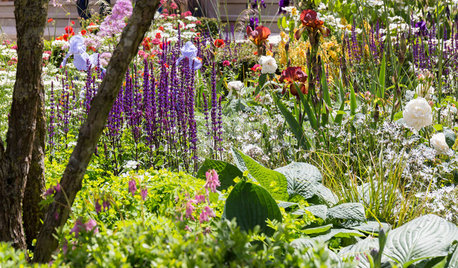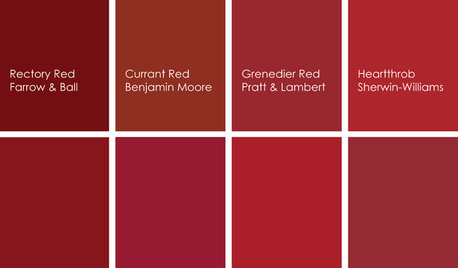Alder takes stain more red than Hemlock and Oak?!
Wayne Reibold
16 years ago
Related Stories

FLOORSHow to Get a Tile Floor Installed
Inventive options and durability make tile a good choice for floors. Here’s what to expect
Full Story
MATERIALSWoodipedia: Is It Cherry or Is It Alder?
Learn the differences between these two wood types, as well as costs, sustainability and a caution about finishing
Full Story
TASTEMAKERSA ‘Medieval Contemporary’ Garden Takes the Silver at Chelsea
This colorful show garden inspired by a Gothic cathedral brings the brilliance of stained glass to Britain's biggest flower show
Full Story
DECORATING GUIDESTake Cues From Van Gogh’s Art for Bright and Cheery Interiors
Consider complementary color schemes, welcome unmatched furniture and embrace the stars for a more joyful home
Full Story
HOMES AROUND THE WORLDHouzz Tour: When Two Houses Are Better Than One
Subdividing a Melbourne backyard opens up space to build a second home on this family's property
Full Story
KITCHEN DESIGNKitchen of the Week: A Seattle Family Kitchen Takes Center Stage
A major home renovation allows a couple to create an open and user-friendly kitchen that sits in the middle of everything
Full Story
INSIDE HOUZZHow Much Does a Remodel Cost, and How Long Does It Take?
The 2016 Houzz & Home survey asked 120,000 Houzzers about their renovation projects. Here’s what they said
Full Story
KITCHEN DESIGNCooking With Color: When to Use Red in the Kitchen
Candy Apple Red, Red Licorice and more for your kitchen walls, cabinets or island? The color choices are as delicious as they sound
Full Story
KITCHEN CABINETSKitchen Cabinet Color: Should You Paint or Stain?
Learn about durability, looks, cost and more for wooden cabinet finishes to make the right choice for your kitchen
Full Story
COLORTake a Slice From Psychology to Use Orange Better
Get the scoop on this attention-seeking hue and learn how it can bring a refreshing zing to your interiors — and your spirit
Full StoryMore Discussions








bobismyuncle
bobismyuncle
Related Professionals
Bonita Cabinets & Cabinetry · Centreville Carpenters · Morristown Carpenters · Snellville Carpenters · Tucson Carpenters · Aurora Flooring Contractors · Beacon Flooring Contractors · Elgin Flooring Contractors · Kendall West Flooring Contractors · Swampscott Flooring Contractors · Wausau Flooring Contractors · Englewood Flooring Contractors · Carlsbad Furniture & Accessories · Toledo Furniture & Accessories · Maplewood Furniture & AccessoriesWayne ReiboldOriginal Author
Wayne ReiboldOriginal Author
ron6519